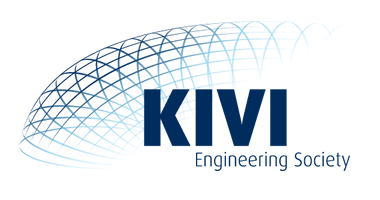Nieuws
Home Afdelingen Telecommunicatie Nieuws
-
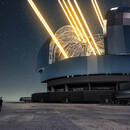
TNO en Demcon geven ’s werelds grootste telescoop scherp zicht
Technologie-ontwikkelaar en -producent Demcon heeft afgelopen week samen met TNO het eerste Laser Projection System geleverd. Bestemming is de Europese Zuidelijke Sterrenwacht (ESO), waar TNO en ESO het systeem zullen testen. In totaal gaan Demcon-bedrijf Focal en TNO negen systemen bouwen voor ESO’s Very Large Telescope en Extremely Large Telescope in Chili. De systemen projecteren zogeheten ‘laser guide stars’ in de atmosfeer om de grote telescopen te helpen bij beter scherpstellen op astronomische objecten ver weg. Zo krijgen sterrenkundigen scherpere beelden van het heelal. Ze hopen daarmee nieuwe ontdekkingen te doen, bijvoorbeeld over de evolutie van het heelal na de oerknal en de vorming van sterren en sterrenstelsels.
-
Nederland stap dichterbij ecosysteem voor lasersatellietcommunicatie
Op 13 maart 2024 kondigen TNO en FSO Instruments aan dat ze licentie- en samenwerkingsovereenkomsten hebben gesloten. Onder deze overeenkomsten verwerft FSO Instruments wereldwijde rechten om de laser satelliet communicatietechnologie van TNO te industrialiseren en commercialiseren. Deze optische technologie maakt veel snellere en veiligere breedbandconnectiviteit mogelijk dan met momenteel gebruikte radiofrequenties. De overeenkomst bevestigt de toewijding van beide partijen aan een langdurig partnerschap om een Europees ecosysteem voor laser satellietcommunicatie te vestigen in Nederland.
-
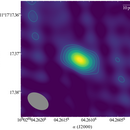
Super sharp images reveal a possible hypernebula powered by a source of fast radio bursts
A team led by astronomers in the Netherlands have confirmed a repeating FRB source to be linked to a potential ‘hypernebula’ – a dense and highly magnetised cloud of plasma that is illuminated by a powerful but still mysterious source. This confirmation was possible thanks to the use of the European VLBI Network (EVN) and marks the second occasion where an FRB source appears to be powering a hypernebula. Article news Astron Published by the editorial team, 30 November 2023.
-

Wi-Fi CERTIFIED 7: Driving the next level of Wi-Fi performance
The Wi-Fi Alliance has announced that developments of Wi-Fi 7 are going so fast, that the Wi-Fi 7 specification will be finalized by the end of the first quarter, opening the doors to adopting standardized hardware by businesses and enterprises.
-
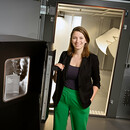
5G antennes meten in de galmkamer
Er is een snelle toename van (slimme) apparaten die verbonden zijn of gaan worden met het 5G-netwerk. De hoogfrequente antennes, die hierin zitten zijn vaak geïntegreerd met chips en dat maakt het testen een stuk lastiger. TU/e onderzoeker Anouk Hubrechsen ging aan de slag met een concept uit de akoestiek en laat zien dat haar unieke table-top galmkamer hoogfrequente antennes veel accurater en sneller kan doormeten.
-

Delft-based Qualinx bags additional $10M to finalize GNSS IoT radio SoC
Qualinx has raised an additional 10.2 million dollars in Series A funding. The money comes from existing backers, Forward.one, Innovationquarter Capital and Waterman Ventures, and includes an Innovation Credit facility from the Netherlands Enterprise Agency (RVO). Together with the 8.8 million dollars (8 million euros) secured earlier this year, the Delft University of Technology spinoff now has sufficient financing to complete the development of its second-generation GNSS IoT radio system-on-chip and commence mass production in 2024.
-
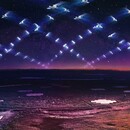
Radio waves leaking from large satellite constellations could jeopardize astronomical exploration
The LOFAR radio telescope has shown that satellites can unintentionally emit radio waves that interfere with the observations of radio telescopes. Satellites circle the globe in ever increasing numbers. Their radio emission could, if not addressed, close unique and scientifically valuable windows into the Universe. It is of crucial importance for the astronomy sector and industry to collaborate to overcome these issues and for the International Telecommunications Union to establish regulation to control this emission.
-
Wireless power makes blind people see again
More than 43 million people worldwide are blind. In the past 30 years, that number has increased by roughly 50 percent. Most blind people are born with normal vision and lose their sight over time, due to medical causes or an accident. Often, the visual cortex in the brain is still capable of interpreting electrical signals, but the eyes or the connection between the eyes and brain are damaged or lost. It is possible to restore some form of sight by providing the right electrical signals to the visual cortex with an implant. PhD researcher Tom van Nunen has designed a wireless energy transfer system to safely and reliably connect to the implant, and developed a prototype. Tom van Nunen defended his thesis at the department of Electrical Engineering on February 8th, 2023.
-
Nieuwe naam voor Agentschap Telecom per 1 januari 2023 Rijksinspectie Digitale Infrastructuur (afgekort RDI).
Op 6 november 2022 maakte Minister Adriaansens van Economische Zaken en Klimaat officieel de nieuwe naam van Agentschap Telecom bekend. Dat deed zij via een korte tijdreis in Virtual Reality, tijdens een bijeenkomst bij Agentschap Telecom in Amersfoort. Ook burgemeester Bolsius van Amersfoort was daarbij aanwezig. Vanaf 1 januari gaat de toezichthouder verder als Rijksinspectie Digitale Infrastructuur (afgekort RDI).
-
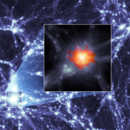
LOFAR detects gigantic radio sources in the universe
An international research team, led by the Observatory of Universität Hamburg has, using LOFAR, discovered four radio sources of up to ten million light years in size: megahalos. Published by the editorial team, 19 October 2022
